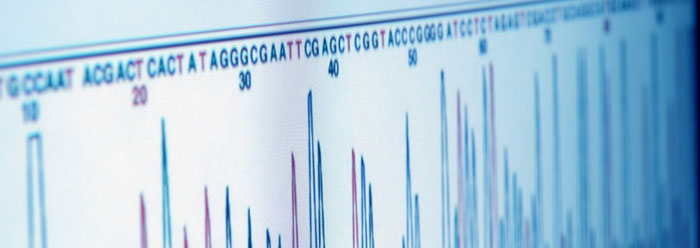Inside a human cell's mitochondria--the tiny organelles that provide energy--there is a small and unique chromosome. This loop of DNA is passed from mother to child in every generation and provides an intriguing source of information about mankind's past. Geneticists are using that information in an attempt to determine exactly when the "mother" of all humans lived.
Studies involving this mitochondrial DNA, or mtDNA, raise a number of questions. First, is it possible to reconstruct a putative first mother's mtDNA sequence? And if so, how does it compare to that of modern humans--her many descendants? Also, is there enough information in today's mtDNA to deduce when the figurative first mother--named "Mitochondrial Eve"--lived?
When investigations into these questions began a few decades ago, optimism was high regarding the possibility of pinpointing that first mother's date. But studies have since shown that the data alone are not enough to provide an answer. A certain number of starting assumptions are required, and when researchers' different assumptions are applied, the data can yield very different "ages" for Mitochondrial Eve. A review of the earliest calculations, published in the evolutionary journal Science in 1998, showed that:
Regardless of the cause, evolutionists are most concerned about the effect of a faster mutation rate. For example, researchers have calculated that "mitochondrial Eve"--the woman whose mtDNA was ancestral to that in all living people—lived 100,000 to 200,000 years ago in Africa. Using the new clock, she would be a mere 6000 years old. No one thinks that's the case, but at what point should models switch from one mtDNA time zone to the other?1
So, to align the age with current evolutionary theories of human origins, subsequent calculations have started with assumptions that ensure at the outset that Mitochondrial Eve would have lived more than 100,000 years ago. Thus, evolution-inspired Mitochondrial Eve research is largely characterized by circular reasoning--evolutionary assumptions of deep time are used as an interpretive filter that (not surprisingly) then yields deep-time results.
This was made abundantly clear in a Rice University press release regarding the latest attempt to determine when Mitochondrial Eve lived. Researchers used a new statistical method that supposedly assured that the "Mother of all humans lived 200,000 years ago."2
But in explaining how they obtained this number, the researchers inadvertently admitted their bias that partially determined the outcome before they even began calculating. The press release described some of the steps required to interpret DNA base differences "into a measure of time."2
"And how they evolved in time depends upon the model of evolution that you use,"2 according to study co-author Krzysztof Cyran of Poland's Institute of Informatics at Silesian University of Technology. Of course, when one begins with an evolutionary model, one must expect evolutionary results.
Each model added coefficients that are numerically expressed answers to key questions, such as the rate of DNA base change, the effect of mutational hot spots, what DNA sequence to use for comparison (which, for evolutionists, is often from the chimpanzee), and the time between each generation.3 But many of those numbers were assumed:
Each model has its own assumptions, and each assumption has mathematical implications. To further complicate matters, some of the assumptions are not valid for human populations. For example, some models assume that population size never changes.2
But the best available data are still most consistent with the earlier studies that showed that the age of Mitochondrial Eve coincided well with the biblical age of the historical Eve.
For example, a 2008 study of the mitochondrial chromosome found that "on average, the individuals in our dataset differed from the Eve consensus by 21.6 nucleotides."4 The investigators did not expect to find so few differences between their over 800 samples of modern DNA and the calculated sequence for "Eve."
Further, for so few--only 21.6 nucleotides out of 16,569--DNA differences to have accumulated at anything near the measured mutation rates, a much shorter time than "200,000 years" must have transpired since Mitochondrial Eve arrived on the scene.
To stretch out across evolutionary time the occurrences of so few DNA changes requires a gymnastic juggling of the coefficients used in the various models, and appears to require a biologically unrealistic, super-slow mutation rate. Making the data fit vast timescales requires the use of a broken, circular-reasoning-based, evolutionary "clock."
References
- Gibbons, A. 1998. Calibrating the Mitochondrial Clock. Science. 279 (5347):28-29.
- Mother of all humans lived 200,000 years ago. Rice University press release, August 17, 2010, reporting on research published in Cyran, K. A. and M. Kimmel. Alternatives to the Wright-Fisher model: The robustness of mitochondrial Eve dating. Theoretical Population Biology. Published online ahead of print June 19, 2010.
- Mutational hot spots are areas in the mitochondrial chromosome that experience base changes between generations so rapidly that all four DNA bases may have cycled through in only thousands of years, thus skewing attempts at reconstructing mitochondrial DNA clocks. See Galtier, N. et al. 2006. Mutation hot spots in mammalian mitochondrial DNA. Genome Research. 16 (2): 215-222.
- Carter, R. W., D. Criswell, and J. Sanford. 2008. The "Eve" Mitochondrial Consensus Sequence. In Proceedings of the Sixth International Conference on Creationism. Snelling, A. A, ed. Pittsburgh, PA: Creation Science Fellowship and Dallas, TX: Institute for Creation Research, 111-116.
* Mr. Thomas is Science Writer at the Institute for Creation Research.
Article posted on September 7, 2010.

























